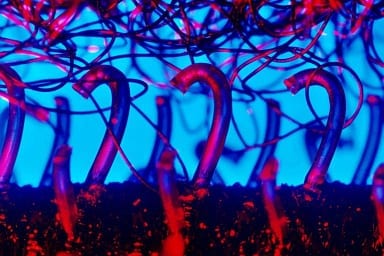
Velcro, as viewed under a microscope here, is one well known example of biomimicry. The hook and loop design is similar to the structure of burrs that grow on some plants and affix themselves to clothes, hair, or pets that brush up against them.
It can be easy to think that to address the intimidating environmental problems we face today, we need the newest, most innovative, most ground-breaking technology. But what if ideas for new technologies could come from strategies that have already been in use for centuries? Biomimicry is the process of observing how plants and animals accomplish certain tasks, like filtering small particles out of air or water or absorbing CO2, and then applying those lessons from nature to the development of man-made technologies. The following article describes examples of biomimicry at work to combat climate change, and a wide-ranging gallery of biomimicry projects can be found on the Biomimicry Institute’s website. Next time you’re going for a walk outside, look around and see what inspiration you might be able to draw from nature for new ways of doing things!
How plants and animals are teaching scientists to fight climate change – NBC News (October 2018)
Submissions gallery for Biomimicry Institute’s Global Challenge – Biomimicry Institute
Velcro photograph – https://commons.wikimedia.org/wiki/File:Micrograph_of_hook_and_loop_fastener,(Velcro_like).jpg
